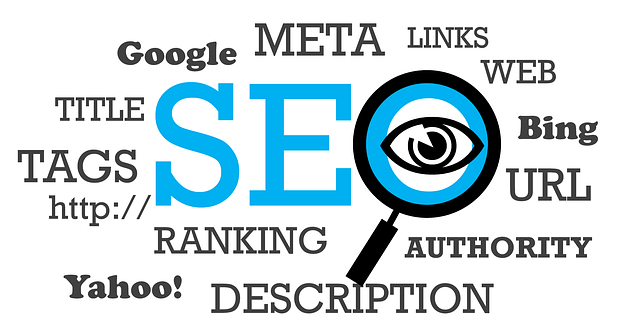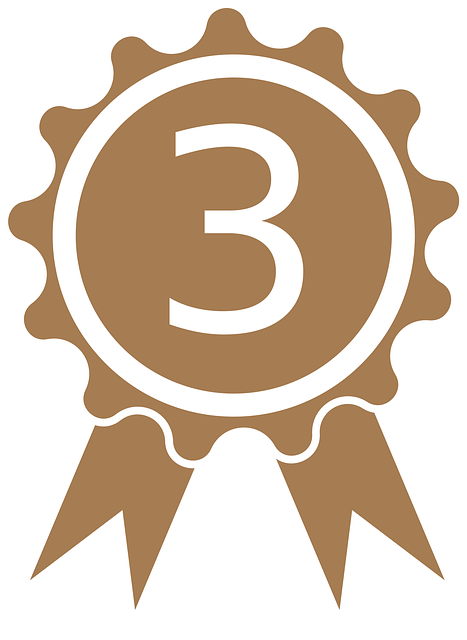Optimizing website structure through navigation analysis enhances user experience and SEO. Prioritize content, simplify menus, use relevant keywords in URLs, improve internal linking, create high-quality content, craft compelling meta tags, ensure mobile-friendliness, implement Schema Markup, regularly audit and update site structure for better search rankings.
Looking to boost your website’s ranking on search engines? Improving website structure is a powerful SEO tip that can drive higher traffic and visibility. This comprehensive guide delves into essential strategies like understanding user behavior, implementing logical site architecture, optimizing URL structures, enhancing internal linking, creating quality content, using meta tags effectively, ensuring mobile-friendliness, incorporating schema markup, and regularly auditing your structure. By following these SEO tips for ranking higher, you can transform your website’s online performance.
Understand User Behavior for Effective Navigation

Understanding user behavior is a critical component of effective website structure and an essential SEO tip for ranking higher. By analyzing how visitors navigate your site, you can optimize their experience, encouraging them to explore more pages and spend longer on each visit. This behavioral data reveals the most popular content, frequently asked questions, and potential dead ends within your site’s architecture.
Using this knowledge, you can reorganise your website structure, ensuring that valuable information is easily discoverable. For instance, rearranging content categories or creating a more intuitive menu can enhance user navigation, leading to reduced bounce rates and increased engagement—all factors that positively impact your search engine rankings.
Implement Clear and Logical Site Architecture

A well-structured website is like a map that guides users and search engines alike. When implementing SEO tips for ranking higher, consider creating a site architecture that reflects a logical flow. Organize your content in a hierarchical manner, ensuring each page has a clear purpose and is easily accessible. Start with the most important pages at the top, making it simple for visitors to find what they’re looking for.
This strategic approach not only enhances user experience but also helps search engine crawlers understand your site’s content better. By implementing a clean and intuitive navigation system, you reduce bounce rates and encourage users to explore more of your website. As a result, search engines are likely to reward your efforts with higher rankings, making it easier for potential customers to discover your business online.
Optimize URL Structures for Keywords

To enhance your website’s SEO and improve search rankings, optimizing URL structures for relevant keywords is a crucial step. URLs are more than just web addresses; they provide valuable clues to both search engines and users about the content they’re about to explore. When crafting or restructuring URLs, incorporate keywords naturally and contextually. This practice ensures that your pages appear more relevant in search results, aligning with user intent.
For instance, instead of generic URLs like `www.example.com/page1`, consider something more descriptive like `www.example.com/seo-tips/optimizing-url-structures`. This approach signals to search engines that the page is dedicated to SEO guidance on this specific topic, making it easier for potential visitors and search algorithms to understand your content’s focus. Remember, clear and keyword-rich URLs contribute to a better user experience and can significantly impact your website’s SEO performance.
Enhance Internal Linking for Better Crawlability

Enhancing internal linking is a powerful SEO tip for ranking higher on search engines. By strategically connecting relevant pages within your website, you guide search engine crawlers through your site’s content, making it easier to understand and index. This simple yet effective strategy ensures that each page contributes to the overall authority of your website, boosting its visibility in search results.
When optimizing internal links, focus on creating a logical and hierarchical structure. Link to related pages within anchor text that accurately represents the destination page’s content. This practice not only improves crawlability but also provides users with a seamless navigation experience. Remember, well-placed internal links can significantly impact your website’s SEO performance, making it an essential element in your quest for higher rankings.
Create Quality Content with Relevant Topics

Creating high-quality, relevant content is a fundamental aspect of improving your website’s structure and boosting its search engine optimization (SEO) performance. When crafting content for your site, focus on producing in-depth, informative pieces that cater to your target audience’s needs. Each page should have a clear purpose and offer unique value, ensuring visitors find exactly what they’re looking for.
Relevant topics are key to ranking higher on search engines. Conduct thorough keyword research to identify the terms and phrases your target demographic uses when searching for information related to your niche. Integrate these keywords naturally into your content, but remember, SEO isn’t about stuffing keywords; it’s about providing valuable, readable content that enhances user experience.
Utilize Meta Tags and Descriptions Effectively

Meta tags and descriptions are essential components in your SEO strategy, providing a clear snapshot of your webpage content to search engines. Crafting compelling meta titles and descriptions that include relevant keywords can significantly enhance your website’s visibility and click-through rates. A well-optimized meta title not only attracts users but also influences search engine rankings, as search algorithms consider these tags when evaluating pages for relevance.
When implementing SEO tips for ranking higher, ensure your meta tags are unique for each page while keeping them concise and descriptive. Meta descriptions, though not directly influencing rankings, play a vital role in encouraging clicks from search results. By including keywords naturally and highlighting the value of the content, you can attract interested users, leading to improved engagement metrics and potentially boosting your site’s authority in the eyes of search engines.
Ensure Mobile-Friendliness for Higher Rankings

In today’s digital era, mobile-friendliness is not just a convenience; it’s an essential SEO tip for ranking higher. With the vast majority of internet users accessing websites via their smartphones and tablets, search engines like Google prioritize sites that offer seamless experiences across all devices. This means ensuring your website is responsive, with content and images that adjust beautifully to various screen sizes. A mobile-friendly site not only enhances user satisfaction but also boosts your page’s load speed, a factor that search algorithms heavily consider.
By adopting mobile-first indexing, Google assesses websites’ performance on mobile devices first, making it crucial to optimize for this platform. Simple adjustments such as optimizing images for faster loading, ensuring touch-friendly buttons and menus, and streamlining content for easy navigation on smaller screens can significantly impact your site’s SEO rankings. Remember that a user-friendly mobile experience is a key component in the complex world of SEO strategies.
Incorporate Schema Markup for Rich Results

Incorporating Schema Markup is one of the powerful SEO tips for ranking higher that can significantly boost your website’s discoverability. It provides search engines with a structured overview of your content, enabling them to understand and interpret your data more effectively. By using Schema Markup, you can enhance your search results with rich snippets, including star ratings, prices, review excerpts, and even call-to-action buttons. These visual aids not only capture users’ attention but also increase click-through rates, as they provide a clear indication of what visitors can expect when clicking on your result.
Implementing Schema Markup is relatively straightforward and can be done using various tools and plugins that generate the markup based on your content. It’s essential to ensure consistency and accuracy in your implementation to avoid confusion for search engine crawlers. As you optimize your website structure, keeping up with SEO tips like these will contribute to better indexing and higher rankings, making your site more visible to potential customers.
Regularly Audit and Update Website Structure

Regularly auditing and updating your website’s structure is a crucial SEO tip for ranking higher. It ensures that your site remains organized, user-friendly, and aligned with the latest search engine algorithms. By periodically reviewing your sitemaps, URL structures, and internal linking strategies, you can identify and fix issues like broken links, redundant pages, or slow loading times. These factors not only enhance the overall user experience but also signal to search engines that your site is active, relevant, and trustworthy.
Staying up-to-date with industry best practices and trends in SEO tips for ranking higher requires a commitment to continuous improvement. Regular updates ensure that your website’s architecture reflects changes in user behavior and search engine preferences. This proactive approach not only boosts your search rankings but also keeps your visitors engaged, encouraging them to explore more of your content and ultimately leading to longer session durations.
